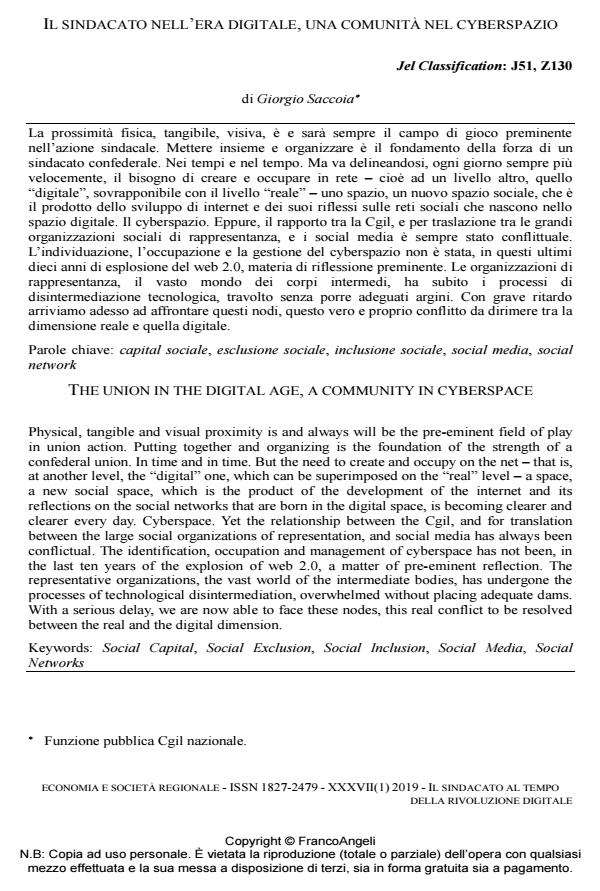The union in the digital age, a community in cyberspace
Journal title ECONOMIA E SOCIETÀ REGIONALE
Author/s Giorgio Saccoia
Publishing Year 2019 Issue 2019/1
Language Italian Pages 12 P. 79-90 File size 320 KB
DOI 10.3280/ES2019-001007
DOI is like a bar code for intellectual property: to have more infomation
click here
Below, you can see the article first page
If you want to buy this article in PDF format, you can do it, following the instructions to buy download credits

FrancoAngeli is member of Publishers International Linking Association, Inc (PILA), a not-for-profit association which run the CrossRef service enabling links to and from online scholarly content.
Physical, tangible and visual proximity is and always will be the pre-eminent field of play in union action. Putting together and organizing is the foundation of the strength of a confederal union. In time and in time. But the need to create and occupy on the net - that is, at another level, the "digital" one, which can be superimposed on the "real" level - a space, a new social space, which is the product of the development of the internet and its reflections on the social networks that are born in the digital space, is becoming clearer and clearer every day. Cyberspace. Yet the relationship between the Cgil, and for translation between the large social organizations of representation, and social media has always been conflictual. The identification, occupation and management of cyberspace has not been, in the last ten years of the explosion of web 2.0, a matter of pre-eminent reflection. The representative organizations, the vast world of the intermediate bodies, has undergone the processes of technological disintermediation, overwhelmed without placing adequate dams. With a serious delay, we are now able to face these nodes, this real conflict to be resolved between the real and the digital dimension.
Keywords: Social Capital, Social Exclusion, Social Inclusion, Social Media, Social Networks
Giorgio Saccoia, Il sindacato nell’era digitale, una comunità nel cyberspazio in "ECONOMIA E SOCIETÀ REGIONALE " 1/2019, pp 79-90, DOI: 10.3280/ES2019-001007